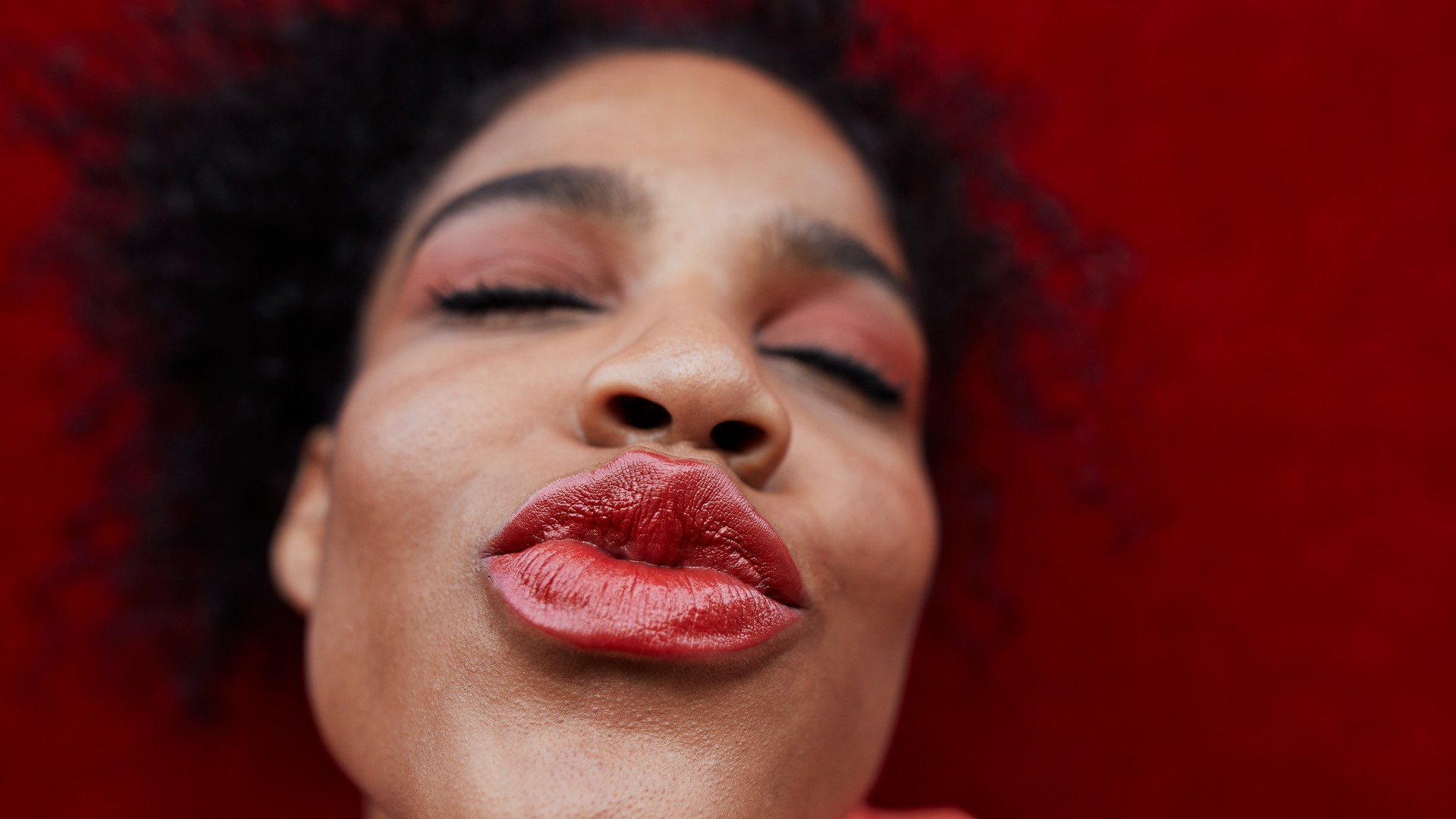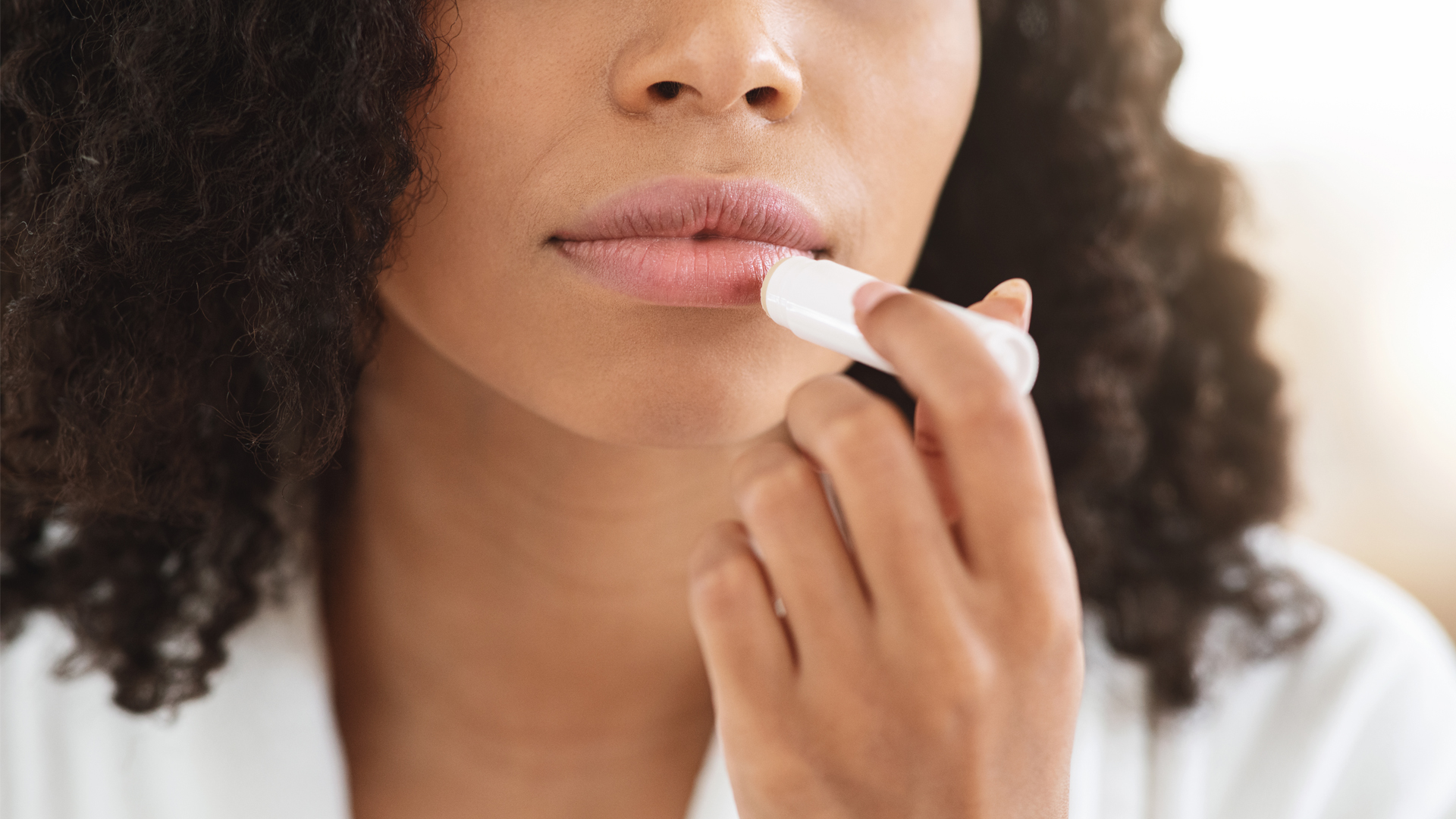Why are human lips red?
Why are lips so red, sensitive and prone to dryness?

We use them every day, but have you ever stopped to consider that your lips do not look, feel or act like other parts of your body? Why are they so red, so sensitive and so prone to dryness? And why have humans evolved to have lips, when other creatures — birds and turtles, for example — get on just fine without them?
"Lips are fundamentally important for eating, respiration and speech," Noël Cameron, a professor of human biology at Loughborough University in the U.K., told Live Science in an email.
Lips are, Cameron noted, sensitive. According to the Jamaica Hospital, lips contain around 1 million nerve endings, which is why they are so affected by touch, and changes in temperature and moisture levels.
"The skin of the lip forms the border between the exterior skin of the face, and the interior mucous membrane of the inside of the mouth," Cameron said. "The mucous membrane is represented by a large area in the sensory cortex of the brain and is therefore highly sensitive."
Cameron noted that, because of this, lips are capable of fine and gross muscular movement.
Related: Can lip balm make your chapped lips worse?
This capacity for delicate and precise movement — provided by five muscles for lip elevation (upward movement) and four for lip depression (downward movement) — enables humans to communicate in the manner we do.
Get the world’s most fascinating discoveries delivered straight to your inbox.
Lips are vital for "bilabial and labiodental consonant sounds, as well as vowel rounding," Cameron said.
Bilabial sounds can only be created via the use of both lips (the letter 'p' in picnic, for example), while labiodental sounds necessitate the use of lips and teeth (the letter 'f' in fructose).
Without using or moving one's lips, Cameron added, it is incredibly difficult to create some sounds or to pronounce certain letters: Try vocalizing the letters M, W or B without using your lips, for example, to get an idea of the difficulties faced by ventriloquists.
Red in the face
But why do lips look the way they do? Why are they so red — although depending on ethnicity, lip color can range from reddish-pink to brown — especially when compared with other parts of the face?
"The skin of the lip, with three to five cellular layers, is very thin compared to typical face skin, which has up to 16 layers," Cameron said. "With light skin color, the lip skin contains fewer melanocytes (cells that produce melanin pigment, which give skin its color). Because of this, the blood vessels appear through the skin of the lips, which leads to their notable red coloring."
Cameron added that, with darker skin color, the effect is less prominent because "the skin of the lips contains more melanin and thus is visually darker."
There are also other differences between the lips and other parts of the human face, Cameron pointed out.
"Lip skin is very thin, not hairy, and does not have sweat glands. Therefore, it is relatively fragile, is dry to the touch, and splits easily. It does not have the usual protection layer of sweat and body oils, which keep the skin smooth, inhibit pathogens and regulate warmth. Therefore, the lips dry out faster and become chapped more easily."
Lips, as with the soles of one's feet and the palms of one's hands, have no hair follicles, hence why hair cannot grow there. This is because these parts of the body are more effective without hair — it would be much trickier to grab items if our palms were hairy, while our lips would be less capable of clear speech were they encumbered by hair.
A moment on the lips
Of course, while vital for speech and eating, lips are also frequently used for kissing. "They act as an erogenous zone and as an area of attraction," Cameron said.
In research published in 2010 in the journal Perception, white participants could adjust the color and contrast of lips in photographs to enhance certain qualities. The researchers found that participants were more likely to increase lip redness to enhance femininity and attractiveness in women's faces. Even so, research is mixed on the notion that the color "red" (or red lips) is a sign of sexual attractiveness.
Originally published on Live Science on Oct. 22, 2012 and rewritten on June 06, 2022.

Joe Phelan is a journalist based in London. His work has appeared in VICE, National Geographic, World Soccer and The Blizzard, and has been a guest on Times Radio. He is drawn to the weird, wonderful and under examined, as well as anything related to life in the Arctic Circle. He holds a bachelor's degree in journalism from the University of Chester.




